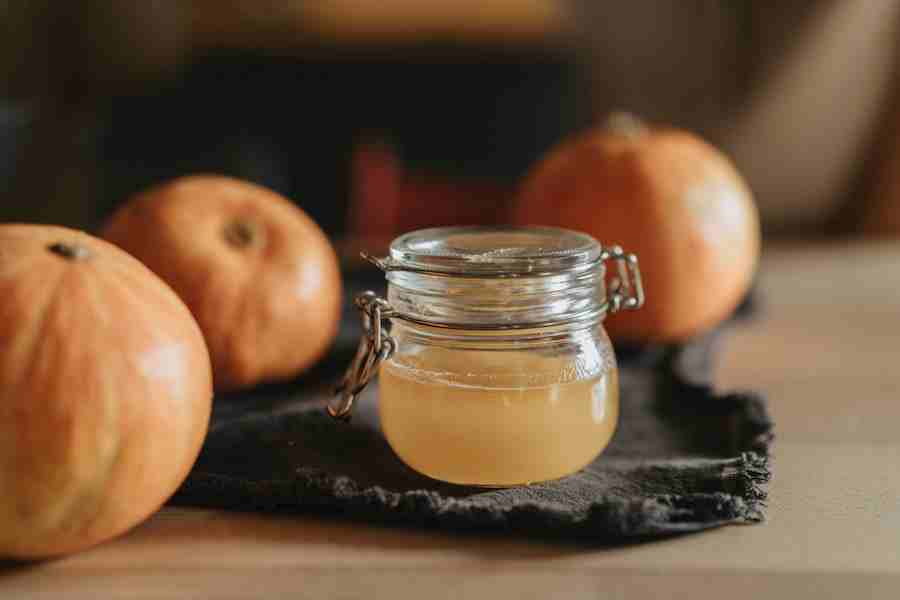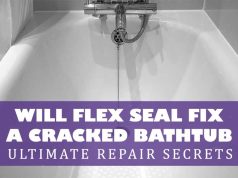The dilemma of whether to use Easy-Off oven cleaner on a stovetop has left many wondering about its effectiveness and safety. As a widely used product for oven cleaning, its potential application on stovetops sparks questions. This article delves into the intricacies, discussing the compatibility of Easy-Off with different stovetop types, safety measures, and alternatives. By addressing these concerns, readers can make informed decisions about harnessing Easy-Off’s power for sparkling stovetops.
Can I Use Easy Off On Stove Top?
Yes, you can use Easy-Off oven cleaner on a stovetop, but with caution. Check the product label and follow guidelines for your stovetop type. Wear protective gear, work in a ventilated area, and avoid skin or eye contact. Consider alternative cleaners for regular maintenance to prevent heavy buildup that may require heavy-duty solutions like Easy-Off.
Understanding Easy-Off Oven Cleaner
Understanding Easy-Off Oven Cleaner is essential before considering its use on a stovetop. Easy-Off is a popular cleaning product designed primarily for removing tough grease, grime, and baked-on residue from oven interiors. It comes in various formulations, each catering to specific cleaning needs. The ingredients in Easy-Off often include powerful chemicals like sodium hydroxide, which aids in breaking down stubborn residues. However, it’s crucial to note that Easy-Off’s effectiveness comes with the need for cautious handling due to its strong chemical composition.
When selecting an Easy-Off product, you’ll encounter options such as fume-free, heavy-duty, and even specialty formulas. Reading the product label and instructions thoroughly is paramount, as they provide valuable insights into proper usage, precautions, and recommended surfaces. Keep in mind that Easy-Off is formulated for ovens, which can tolerate higher temperatures and often have more durable surfaces than stovetops. As such, understanding the specific type of Easy-Off you’re using and its intended application is crucial to ensure both effective cleaning and your safety while using it on a stovetop.
Different Types Of Stovetops
Stovetops come in various types, each with distinct features and materials. Understanding these differences is vital when considering the use of Easy-Off oven cleaners.
- Gas Stovetops: These stovetops use open flames for cooking. They often have removable grates and burner caps. The burner components can be cleaned using regular methods, but caution should be exercised when considering the use of heavy-duty cleaners like Easy-Off. Harsh chemicals might damage the burners’ coatings or finishes.
- Electric Coil Stovetops: These stovetops have exposed heating coils. While the coils can be removed and cleaned individually, it’s advisable to avoid using aggressive cleaners like Easy-Off. These chemicals could damage the coils and the drip pans underneath them.
- Glass Ceramic Stovetops: These sleek stovetops have a smooth glass surface with heating elements underneath. Using Easy-Off on these surfaces is generally not recommended, as the strong chemicals might scratch or discolor the glass. Instead, opt for specialized glass-ceramic cooktop cleaners.
- Induction Stovetops: Induction stovetops use electromagnetic fields to heat cookware directly. The surface remains relatively cool. Avoid using Easy-Off on these stovetops, as the chemicals might adversely react with the glass or ceramic surface.
Tips For Effectively Cleaning Different Stovetop Surfaces
Effectively cleaning different stovetop surfaces requires tailored approaches to ensure their longevity and appearance. Here are tips for cleaning various types of stovetops:
Gas Stovetops:
Remove burner grates and caps before cleaning. Wash them in warm, soapy water or a vinegar solution. Wipe the stovetop surface with a damp cloth to remove loose debris.
Use a mild degreasing cleaner or a mixture of baking soda and water to gently clean the surface. Avoid abrasive pads that could scratch the finish. For stubborn stains, create a paste with baking soda and water, apply it to the stain, and let it sit before scrubbing gently.
Electric Coil Stovetops:
Allow the coils to cool before cleaning. Remove them for thorough cleaning.
Wipe down the stovetop with a damp cloth to remove crumbs and debris.
Use a non-abrasive cleaner or a mixture of mild dish soap and water to clean the surface and drip pans. Avoid excessive moisture around the coil connections and sockets to prevent damage.
Glass Ceramic Stovetops:
Allow the surface to cool before cleaning. Avoid using Easy-Off or abrasive cleaners, as they can scratch the glass. Wipe away spills and crumbs with a soft cloth after each use. Use a specialized glass-ceramic cooktop cleaner and a non-abrasive scrubbing pad to remove residue. Follow the cleaner’s instructions for the best results. Regularly clean up sugary or acidic spills promptly, as they can damage the glass if left unattended.
Induction Stovetops:
Clean the surface after it has cooled down. Use a damp microfiber cloth to remove fingerprints and light spills. For stubborn residue, use a mixture of vinegar and water or a mild cooktop cleaner. Avoid abrasive cleaners or scouring pads. Gently scrub in a circular motion to prevent scratching the surface. Always refer to your stovetop manufacturer’s guidelines for cleaning recommendations specific to your model. When using any cleaning product, including Easy-Off, on your stovetop, test it on a small, inconspicuous area first to ensure it doesn’t cause damage or discoloration.
Safety Precautions
When using Easy-Off oven cleaner on a stovetop, prioritizing safety is paramount due to the product’s potent chemical composition. Here are vital safety precautions to observe:
- Protective Gear: Wear chemical-resistant gloves to shield your skin from potential contact with the cleaner. Don safety goggles or eye protection to prevent any accidental splashes from coming into contact with your eyes.
- Ventilation: Work in a well-ventilated area. Open windows and doors to ensure proper airflow. If possible, use a portable fan or wear a mask with an appropriate filter to avoid inhaling fumes.
- Avoiding Skin Contact: Prevent direct skin contact with Easy-Off by wearing long sleeves and pants. In case of accidental contact, rinse the affected area with water immediately. Never use the cleaner without gloves, as the chemicals can be corrosive.
- Avoiding Eye Contact: Wear protective eyewear to safeguard your eyes from potential splashes. If Easy-Off comes into contact with your eyes, rinse them thoroughly with water for at least 15 minutes and seek medical attention.
- Read and Follow the Instructions: Carefully read the product label and follow the manufacturer’s instructions for usage, application, and safety precautions. Adhere to recommended wait times and rinse procedures.
- Preparation: Gather all necessary cleaning supplies before starting the process to minimize distractions. Ensure that children and pets are kept away from the cleaning area.
- Emergency Procedures: In case of accidental ingestion, contact poison control or seek medical attention immediately. If fumes become overwhelming, move to a well-ventilated area.
Conclusion
In the realm of stove-top cleaning, the potential use of Easy-Off oven cleaner has been demystified. While its powerful formula can effectively tackle grime, its application demands prudence. Understanding your stovetop’s type, adhering to manufacturer guidelines, and employing safety precautions are paramount. The decision to use Easy-Off should align with the specific needs of your stovetop and your commitment to safety. Exploring alternative cleaning methods for routine maintenance might mitigate the need for heavy-duty solutions. With this knowledge, you’re empowered to make informed choices for a gleaming, well-maintained stovetop.
FAQ’s
Can I Use an Easy-Off Oven Cleaner On A Glass Ceramic Stovetop?
Using Easy-Off on glass ceramic stovetops is generally not recommended. The strong chemicals can damage the glass surface or cause discoloration. Instead, opt for specialized glass-ceramic cooktop cleaners that are gentler on these surfaces.
Is Easy-Off Safe To Use Around Food Preparation Areas?
While Easy-Off is designed for cleaning ovens and similar surfaces, it’s advisable to keep it away from food preparation areas. Thoroughly rinse and wipe down the stovetop after cleaning to ensure no residue remains that could come into contact with food.
Can I Use Easy-Off On A Stainless Steel Stovetop?
Stainless steel stovetops can tolerate more aggressive cleaners like Easy-Off, but it’s crucial to test it on a small area first to ensure it doesn’t cause damage or discoloration. Opt for stainless steel-specific cleaners for routine maintenance.
How Long Should I Let Easy-Off Sit On The Stovetop Before Cleaning?
Follow the instructions on the Easy-Off product label for recommended wait times. These times can vary depending on the product’s formulation. Longer wait times might be needed for tougher stains.
Can I Use Easy-Off To Clean Burner Grates And Electric Coils?
While it’s possible to use Easy-Off on these components, exercise caution. Heavy-duty cleaners like Easy-Off can damage coatings or finishes. Consider using milder cleaners or degreasers for these parts to avoid potential harm.





















